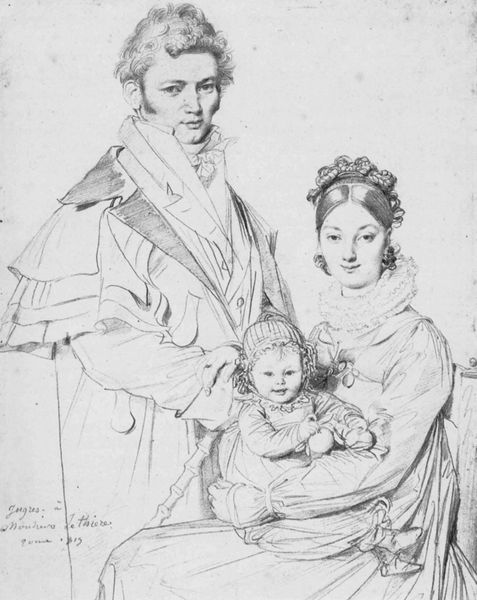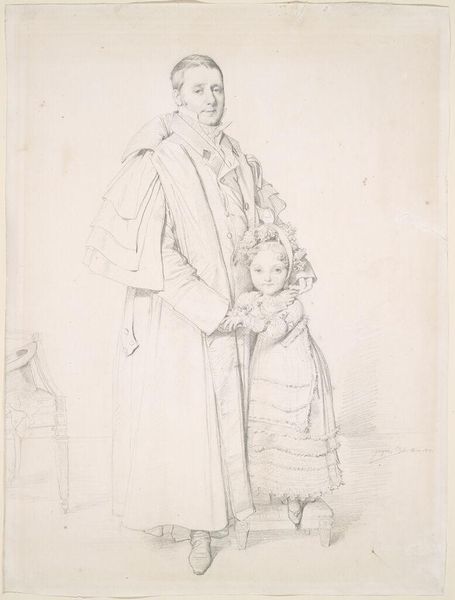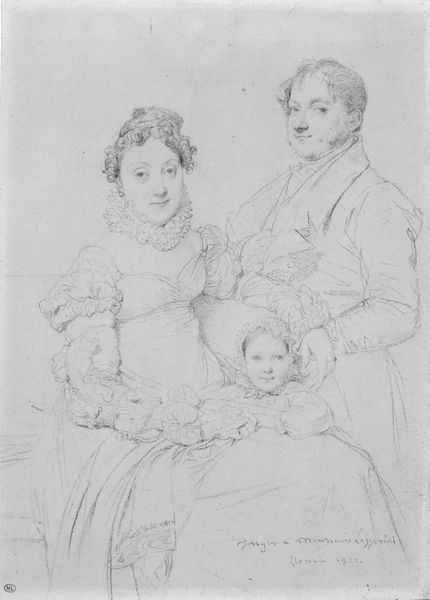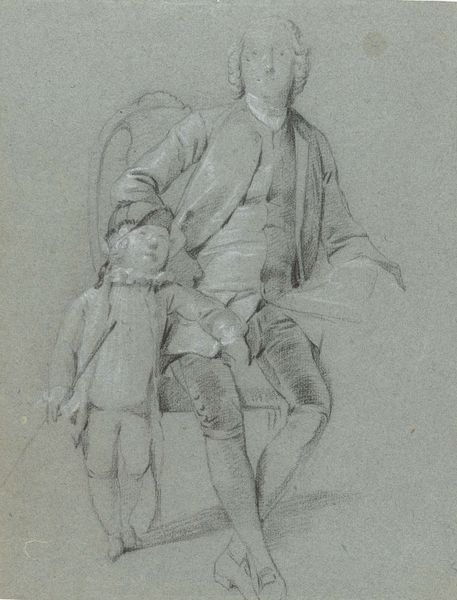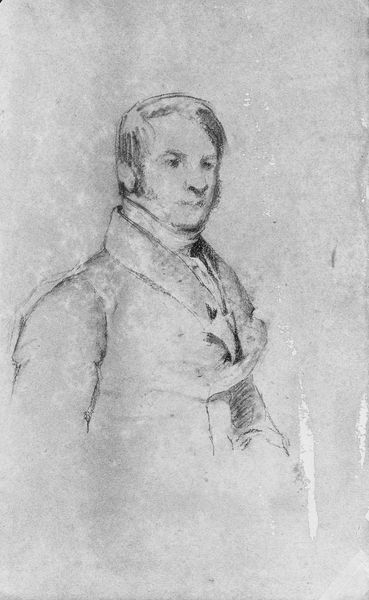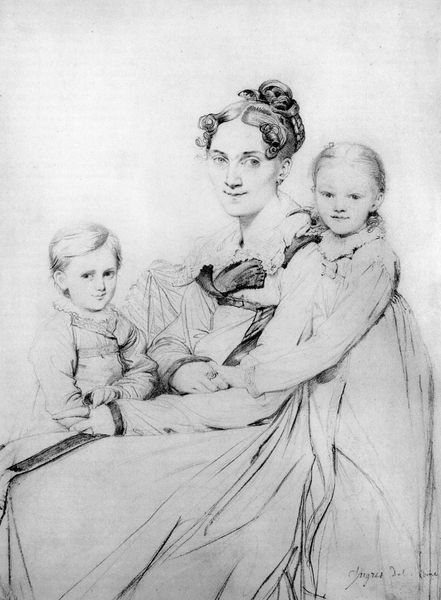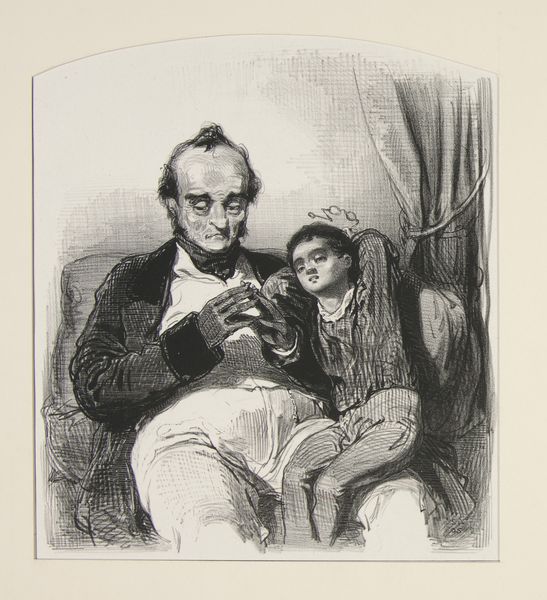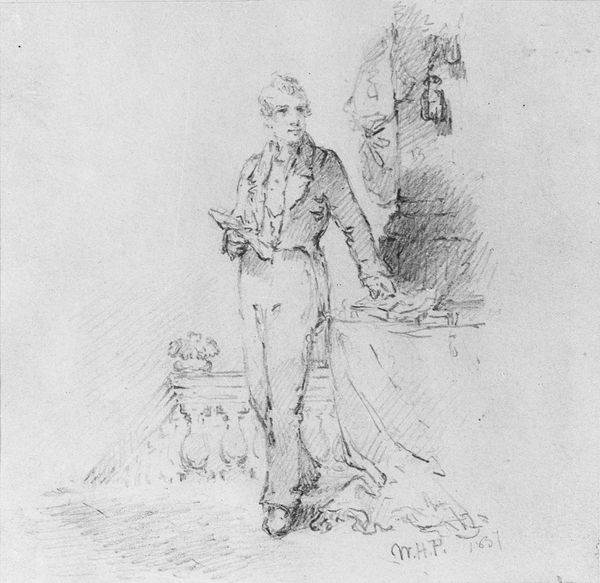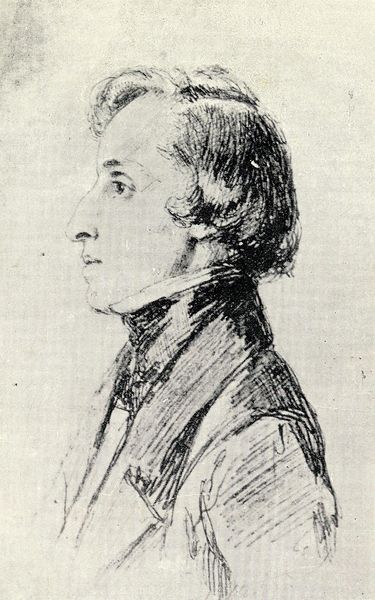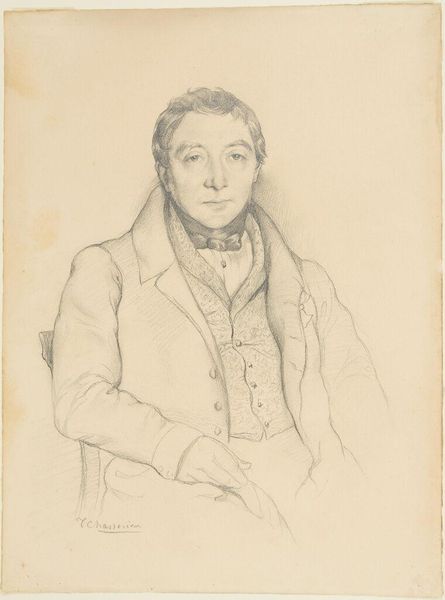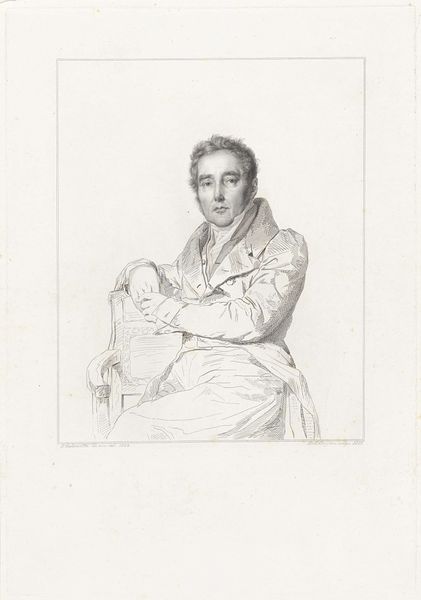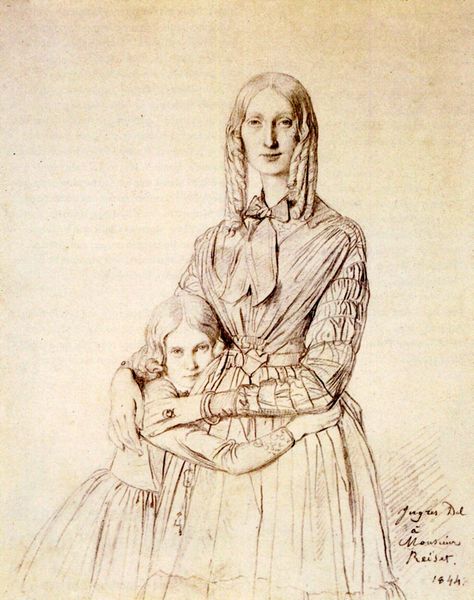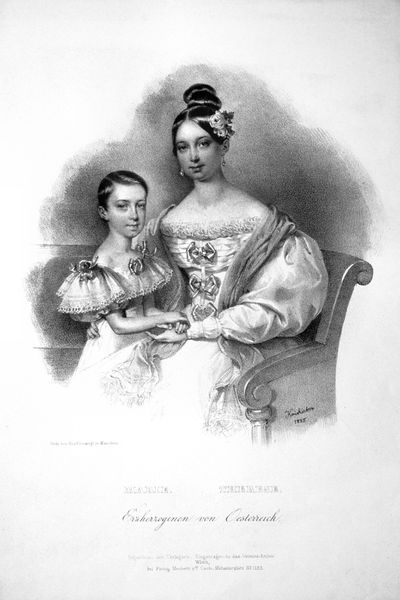
drawing, paper, pencil
#
portrait
#
drawing
#
neoclacissism
#
facial expression drawing
#
portrait image
#
pencil sketch
#
charcoal drawing
#
figuration
#
paper
#
charcoal art
#
portrait reference
#
child
#
male-portraits
#
pencil drawing
#
romanticism
#
pencil
#
line
#
portrait drawing
#
facial study
#
charcoal
#
female-portraits
Copyright: Public domain
Curator: Here we see Jean-Auguste-Dominique Ingres' sensitive pencil and charcoal drawing, "Charles Hayard and his daughter Marguerite." Editor: There's a formality to it, yet the vulnerability in the daughter's posture is what truly grabs me. The textural contrast achieved just with pencil and charcoal is astonishing; it evokes a sense of subdued elegance, though not necessarily warmth. Curator: Indeed, the contrasting textures define the subjects. The father’s face has an almost classical smoothness. Note the linear rendering of his clothing, providing weight to his presence. His clothing almost reads as armour, guarding the softness of the little girl. This careful arrangement underscores societal expectations. Editor: That's a powerful point. Consider the implied social contract; Ingres subtly comments on gender and class through costume. Hayard's confident gaze anchors the image, reflecting his assumed authority, while his daughter appears almost an afterthought, merely accompanying him rather than participating in any shared subjectivity. It echoes paternalism of the period, the constrained agency of women. Curator: It also echoes motifs from earlier portraiture traditions that equate power and wealth to permanence and posterity, and a patriarchal desire for lineage through representations of a father with his daughter. Editor: Portraits are never neutral; they construct and reinforce power structures. Curator: Consider, too, the historical context. Family portraits like these often solidified alliances, particularly dynastic ones, albeit here, with an absence of ostentation in material or setting, such messages read as softer. Editor: The seemingly gentle intimacy might mask more strategic aims, playing to ideals about family but, ultimately, promoting Hayard’s status. Even her dress speaks to the roles girls of that era were encouraged to inhabit, constrained in shape and length to demonstrate purity and grace. Curator: The nuances captured in the rendering offer much. The way their hands meet speaks of protectiveness, both father and child in each other's grasp. While Ingres seemingly provides an illustration of traditional values, it may simultaneously underscore their vulnerability. Editor: Absolutely. This examination complicates initial impressions. The work functions as both document and critique, encapsulating broader discourses about status, power and protection at a pivotal point in social history. Curator: An artwork revealing hidden nuances and layered contexts in its depiction of relationships and status. Editor: Leaving us pondering its messages beyond a deceptively simple family portrait.
Comments
No comments
Be the first to comment and join the conversation on the ultimate creative platform.
